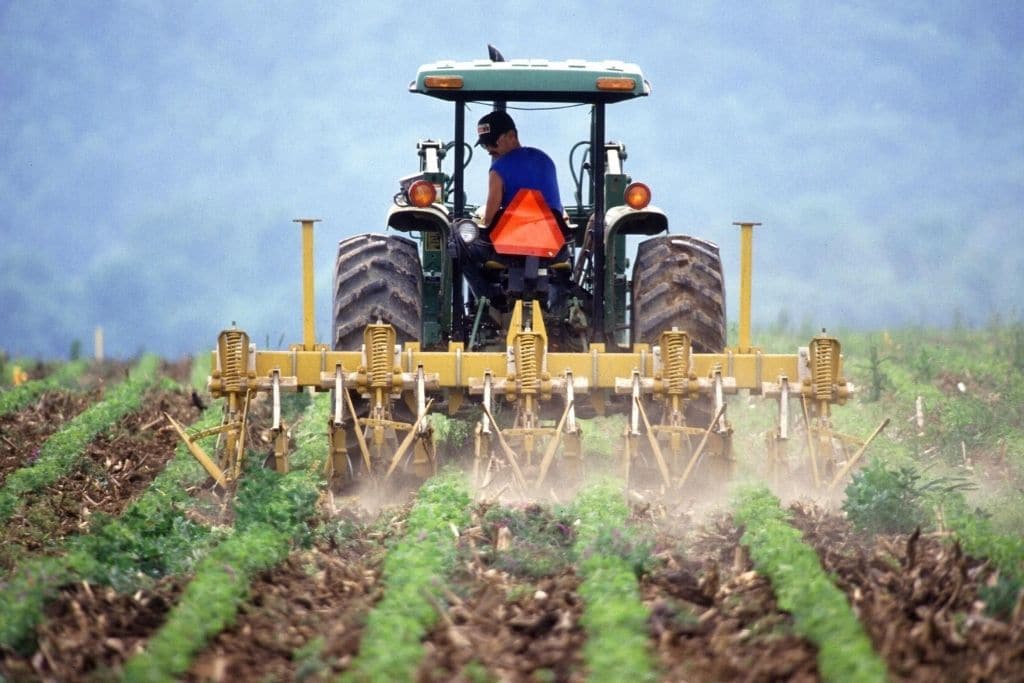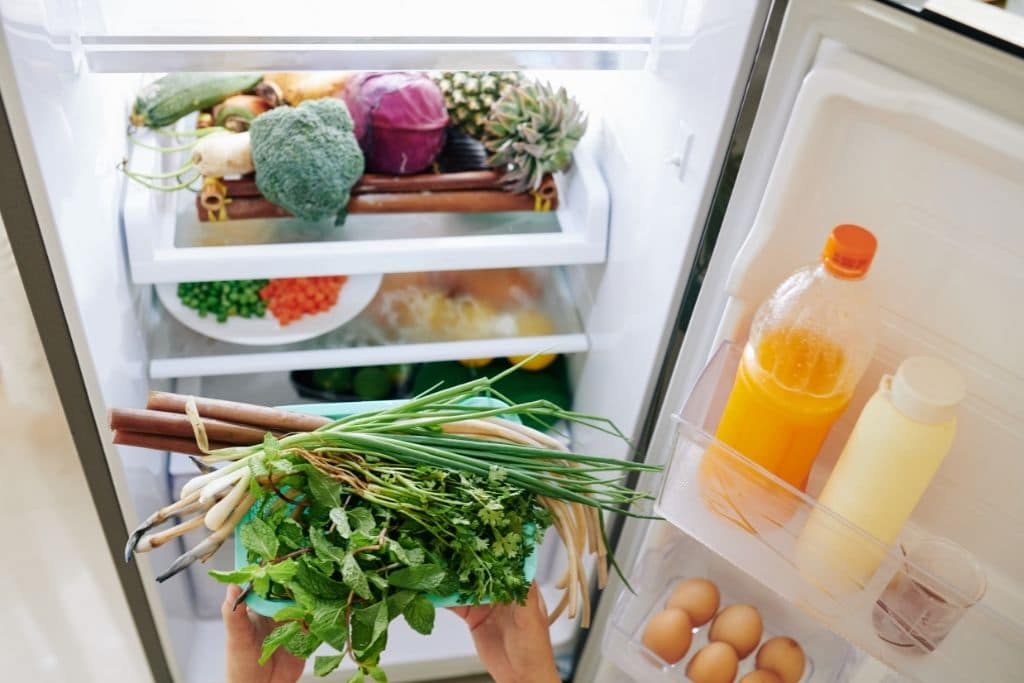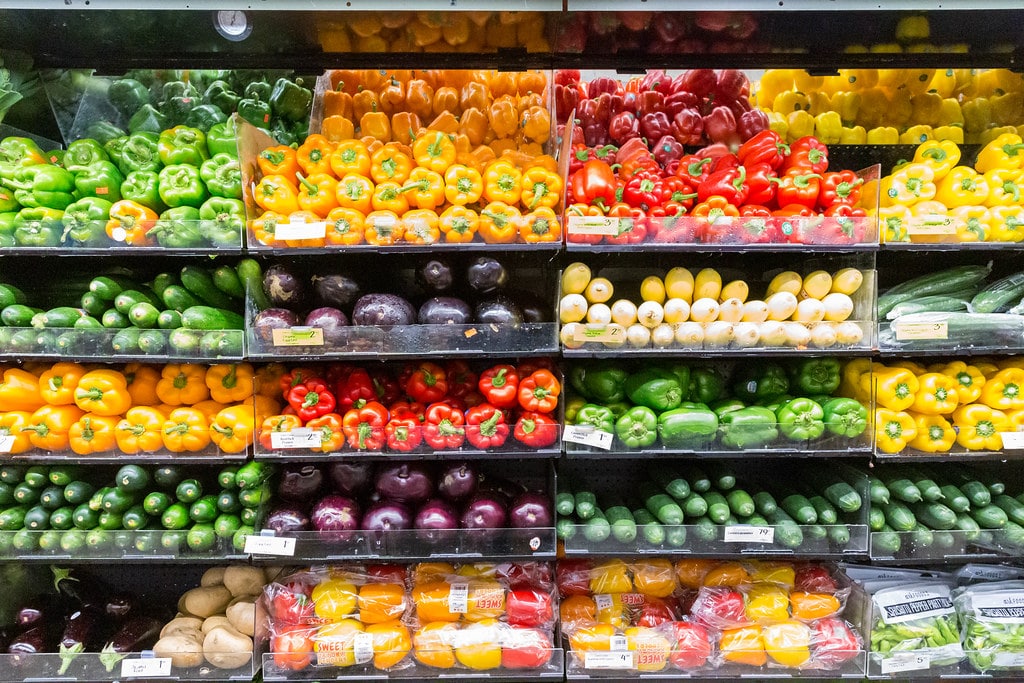Food waste is one of the biggest environmental problems and challenges of our lifetime and it must be eradicated at all costs. However, some see it as a business opportunity ready for innovative solutions. If we properly educate ourselves about food waste, we would see that taking the steps to reduce it can be an excellent way to lower costs, generate profits, and alleviate climate change. Here are 11 effective solutions to tackle food waste for businesses, producers, retailers, and consumers.
__
The issue of food waste ranges from industrial to individual; there are many contributing factors towards why food is wasted, such as purchasing preferences, excess production, retail standards, convenience, cost and more.
Food waste affects all three realms of sustainability: environmental, economic and social. It is a societal issue that touches everyone around the globe, and it contributes to the larger issue of climate change. It has been estimated that food waste accounts for one-third of all human-caused greenhouse gas emissions and generates 8% of greenhouse gases annually.
Solutions for food waste are needed now more than ever. Everyone can be a part of the solution to food waste, from large corporations to small communities. Innovators have explored food waste solutions in the science and technology industry, but there is still more that needs to be done.
Addressing food waste does not need to be a charitable thing or a form of philanthropy. What often goes unrecognised are the huge benefits that can be achieved from reducing food waste, and they are not just environmental. They can differ from improvements in one’s health, to profits generated in a company with innovative solutions to tackle the crisis.
If businesses redirect excess food to communities with limited access to it, they can save money and reduce their methane emissions at the same time. Educating the public about the benefits of reducing food waste will also encourage businesses and consumers to monitor their waste more closely.
You might also like: What is Food Waste?
Creating Circular Food Systems
Businesses can benefit in the reduction of food waste economically, socially and on a broader scale, environmentally.
Inspired by Patagonia’s sustainability effort, the University of Maine’s Mitchell Center Team Project conducted a research project that looked into “Food Management: Empowering Main Businesses Towards Sustainability”. This study was conducted in collaboration with stakeholders who were persuading business owners to adapt food waste solutions into their practices.
The aim of the project was to determine how easily these changes can be adapted to fit the individual lifestyles of consumers.
The stakeholders involved work in Maine’s food-related industries, such as grocery stores, farms, restaurants, and hospitals. Key stakeholders included Hannaford, Northern Light: Maine Coast Hospital, City of Portland, and the Maine DEP, as well as many others.
In this study, using a triple bottom line approach, businesses were encouraged to equally prioritise their monetary profits with their environmental and social responsibilities.
They recommended food systems to be reworked from a linear one into a circular one. In a linear system, there is a simple relationship between production to consumption, in which the end result is waste. However, with a circular economy, the goal is to recycle waste into a resource that can be used to create new products.
The study was successful in that stakeholders were interested in collaboration at the end of the project. It also highlighted the importance of education and accessibility to landfill alternatives. Six solutions were developed from the collaboration in the project:
1. Measuring and tracking all food storage
Businesses were encouraged to use pre-existing food waste tracking technology. These systems can help make businesses aware of the money they are wasting on food waste that never gets to consumers.
2. Creating a “Food Rescue” system
This solution utilised a web-based system that matched locally available food to local food needs and volunteers to transfer the food to the ones that need it.
3. Promoting statewide consumer and producer waste education
Consumer education and awareness about the food system and the waste was encouraged. Doing so helped people see the true value of the food they are purchasing. There is a general lack of awareness, so implementing education programmes in schools can be an effective way to educate the public.
4. Building of food handling and processing infrastructure
This solution focuses on “upcycling” food that is already in the system, e.g. turning tomatoes into tomato sauce and increasing demand in canning and processing food for long-term storage.
The aim here is to connect key members of the food system and create synergy among handling and processing stakeholders. Primary issues to be addressed are transportation availability, storage limitations, and restrictions associated with food donation.
5. Educate producers on the advantages of donating
This solution is also related to the second solution. The primary goal for this solution is to educate stakeholders on food donation incentives, legal protection, and offer guidance on relevant governmental agencies.
6. Composting alternatives
This solution aims to increase available options for composting and other alternatives to disposal of food in landfills. Developing statewide practices to divert food waste from landfills can make huge cost savings possible.

Changing Food Crops
The International Panel of Climate Change (IPCC) recommends producers and farmers to consider a change in crops. They believe that improving food security and lowering greenhouse gas emissions can be achieved through changing what we eat, and growing more sustainable and hardy crops. These types of crops can be ones that are low maintenance, can cope with extreme weather events, and crops that can be interspersed with pastures and arable land.
Avoiding deforestation for additional farmland could also prevent more than 70 gigatons of greenhouse gas emissions.
For other ways to reduce food waste on the producer level, the US Department of Agriculture (USDA) has recommended the following solutions for producers and farmers:
1. On-farm storage
On-farm storage is a great way to reduce post-harvest loss. Farmers should have effective, safe and accessible storage for their products. Some countries might offer a farm storage facility loan programme (USDA) where they provide low-interest financing to help producers build or upgrade storage.
2. Value-added products
This is where you can enhance the value of products by upcycling them into another product. The potential to reduce food waste can be made if we create value-added products. A good example of this is growing out black solider fly larvae to bioconvert the organic waste into sustainable insect protein, oil and frass which eliminates or abates on farm emissions.
3. Secondary markets that produce delivery services
There are many businesses in some countries that offer weekly or bimonthly boxes of food products that have been directly sourced from the farmers. Farmers could directly collaborate with these markets to effectively control their food production.
4. Donations
Donations from farmers can help provide individuals with fresh produce if they have limited access to it. There have been laws and programs created to make donations easy — liability protection, tax benefits, picking and pack-out costs, gleaning etc.
5. Feeding animals
Using the food scraps as feed for animals can also be done. This is a common practice that has been around for centuries and is an easy way to divert food waste. However these animals especially cattle – produce methane. So better ways to recycle the waste need to be deployed, such as insect farming.
Redirecting Food Surplus and Educational Campaigns
Food waste from restaurants and business constitutes 28% of the food wasted. To rectify this, we can push for policies that limit waste and redirect uneaten food to places where it is needed. This can be in the form of food recovery programmes to direct surplus to shelters.
There are other wide varieties of changes retailers can make in order to reduce their food waste. Some of these include upgrading their hardware with the latest technology, focusing on long-term sustainability rather than maximising returns from a product in the short-term, modifying their policies and regulations and ensuring all food is accepted to be sold etc.
Supermarkets can also create campaigns, where they provide education, inspiration and advice to their customers. Sainsbury’s – the second largest chain of supermarkets in the UK – research found that people look to supermarkets for guidance on how to tackle food waste, therefore retailers could provide literature in the form of magazines and membership programmes, that can provide ideas on how customers can prevent food waste, as well as recipes on how to utilise leftover food.
A good example is the rising number of “wonky” vegetable initiatives that have been implemented by supermarkets in recent years. These initiatives encourage consumers to buy food that does not meet aesthetic criteria, and they have been marketed in a way to make them appealing. In 2021, it was reported that Tesco’s food waste scheme Perfectly Imperfect saved at least 50 million packs of fruit and vegetables from being discarded.

Rethink Our Food Perceptions and Habits
Food waste is also the responsibility of us as individuals, as food waste at home can amount to 37% of overall food waste. We need to change our habits in ways that significantly reduce the amount of food that we waste.
One of the easiest solutions for food waste is through organisation methods. We could organise our fridge in a way that ensures the food that will go off first is clearly visible to us when we open the fridge. We could keep a list of the food we have bought on hand, and make a note of all the use-by labels. While this can be time consuming, a study in 2020 indicated that if you put these small efforts into reducing food waste, you could end up saving a substantial amount of money.
We also need to change our minds and the way we perceive food. Rather than preparing and cooking a meal we are in the mood for, we should base our cooking decisions off of the food we see in the fridge that needs to be used first.
Researching literature or buying cookbooks that provide ideas on how to utilise food scraps and leftover food can also be beneficial. Additionally, composting your food waste can help reduce carbon by equivalent of 12 million passenger vehicles off the road for 30 years.
Changes to our diet also need to be made. Experts have stated that there is too much fish, fats, sugars, dairy products and processed foods in our diets. Aside from incorporating more fruit and vegetables in our diets, Dr. Debra Roberts, co-chair of IPCC Working Group II, has recommended that we change our diet to consist primarily of low-CO2 emission food. By doing so, we can ensure that we maintain a balanced diet based on foods such as secondary cereals, pulses, fruits, vegetables, and even animal foods obtained with low CO2 emissions. We can do this by making conscious decisions to eat food that has a low carbon footprint such as plant-based foods. Meal-prepping is another great way to save time and resources, which can also prevent you from overbuying during food shopping.
You might also like: 25 Shocking Facts About Food Waste
6 Key Facts to Help Consumers Make More Conscious Choices
Most foods are labelled in supermarkets and retailers, and understanding what these labels mean can help you organise your food shopping.
1. “Sell by” date
This is the date the retailer should display the product until withdrawing it from the shelves. This date does not indicate that the food has spoiled, but merely specifies the day that it will be past its best quality. The food is still safe to consume.
2. “Best if used by (or before)” date
This date is for sellers and indicates when the food will be at its best quality to eat. It does not mean the food is inedible after this date, but merely informs the customer of when the best time to consume the food will be for it’s flavour and freshness etc.
3. “Guaranteed fresh” date
This date refers to the date when the item is at its optimal freshness. This is usually used for bakery items.
4. “Pack date”
This is usually the date on canned or packaged food. This date tells us when the product was packed. It does not indicate when it needs to be consumed by.
5. “Use By” date
This is the last date that the manufacturer guarantees the product to be at its maximum quality.
6. “Expires on” date
This date refers to the date that it is recommended that the product should be consumed by. If you decide to eat the food after the date, it is at your own risk.
Overall, knowing the meaning of these dates is useful. However, it should be noted that some manufacturers might not put them on their products. For example, if you go to a meat market or a fish market, you may receive products in an ordinary bag, without a label.
Here is a basic guide for when food is safe to eat:
- Milk – usually safe after one week after selling
- Eggs – often fine from three – five weeks from the date of purchase
- Poultry and seafood – cook or freeze within one or two days after purchase
- Beef or pork – cook or freeze within three-five days
- Canned goods – five-18 months, depending on the acidity of the product
Benefits of Reducing Food Waste at Home
Even though you will be making a conscious effort to help the environment, you will also be receiving benefits from reducing your food waste:
- Money saved by planning what to buy properly
- Maintaining a healthy weight and preventing overeating
- Lessening the chances of food poisoning in your household, as storing contaminated food could accidentally be consumed without you realising
- A well-organised, fresh-smelling pantry. There will be no bad smell or messy food waste around your pantry
- Pest control You can keep away pests, such as rats, flies and cockroaches
Earth.Org believes that there is a gargantuan opportunity to recycle organic waste and believes companies like FlyFarm, Ynsect and Innovafeed are showing that insect bioconversion eliminates emissions at the same time as produces high value sustainable protein. Challenges remain for post consumer waste around waste segregation and incentives for consumers to ensure their waste is free of contaminants. Governments should focus on ensuring that organic waste can be recycled.
Featured image by Marco Verch/Flickr
This story is funded by readers like you
Our non-profit newsroom provides climate coverage free of charge and advertising. Your one-off or monthly donations play a crucial role in supporting our operations, expanding our reach, and maintaining our editorial independence.
About EO | Mission Statement | Impact & Reach | Write for us


















